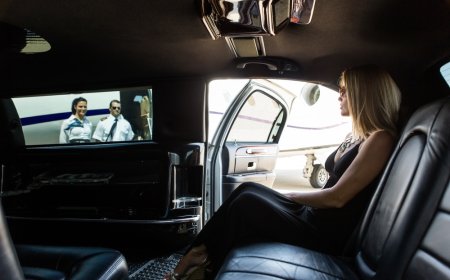Transforming Workspaces: A Deep Dive into Modern Office Furniture Trends
In todays dynamic and rapidly evolving corporate world, the design and functionality of workspaces play a crucial role in shaping employee productivity, comfort, and satisfaction. As businesses strive to create environments that foster collaboration and innovation, office furniture has emerged as a key element in this transformation. From ergonomic chairs and height-adjustable desks to modular workstations and collaborative seating arrangements, modern office furniture is no longer just about aesthetics its about optimizing the workspace for efficiency, wellness, and adaptability.
The growing trend towards hybrid and remote work has further redefined the role of office furniture. Companies are now seeking versatile solutions that accommodate in-office teams, remote workers, and everything in between. This shift has led to a surge in demand for furniture that supports flexibility, space-saving, and digital integration. As a result, office furniture is being engineered with multifunctionality in mind promoting better posture, encouraging movement, and allowing users to personalize their workspace. The emphasis on employee well-being is driving design choices, with features like lumbar support, adjustable armrests, and sit-stand capabilities becoming standard rather than optional.
The Evolution of Office Furniture in the Modern Workplace
Office spaces have undergone a significant transformation over the last few decades. Gone are the days of bulky desks and static cubicles. Todays office furniture landscape is characterized by sleek, minimalist designs and open-plan layouts that encourage communication and teamwork. The evolution is not just in form but also in function. Contemporary office furniture blends form with functionality to meet the demands of a more agile and technology-driven work culture.
This change is fueled by the recognition that a well-designed office environment can directly impact employee morale and performance. Modular systems that allow businesses to reconfigure their layout without major disruptions are gaining popularity. These systems often include mobile desks, reconfigurable storage units, and acoustic pods for focused work, offering both privacy and openness where needed. Additionally, tech-friendly furniture equipped with built-in USB ports, wireless charging pads, and cable management systems are now in high demand, reflecting the digital-first nature of todays workforce.
The Role of Ergonomics in Choosing Office Furniture
Ergonomics is no longer a buzzword its a necessity. Companies are increasingly aware that uncomfortable or ill-suited office furniture can lead to long-term health issues, reduced productivity, and high employee turnover. Ergonomic furniture is designed to support the natural posture and movements of the human body, thereby reducing strain and improving comfort throughout the workday.
Chairs with lumbar support, adjustable height and tilt features, and breathable materials are at the forefront of ergonomic design. Similarly, desks that can be customized in terms of height and angle help prevent repetitive stress injuries. For companies aiming to enhance employee wellness, investing in ergonomic furniture is not just a luxury but a smart business decision. It reduces absenteeism, enhances job satisfaction, and demonstrates a genuine commitment to staff welfare.
Sustainability in Office Furniture Design
Sustainability has become a pivotal factor in the design and selection of office furniture. With increasing environmental awareness, businesses are seeking out furniture made from recycled, recyclable, and responsibly sourced materials. Manufacturers are responding by creating products that are not only durable and stylish but also eco-friendly. This includes the use of FSC-certified wood, low-VOC finishes, and recycled metal or plastic components.
Moreover, sustainable office furniture often features modular designs that allow parts to be replaced or reconfigured without discarding the entire piece. This extends the lifespan of the furniture and reduces waste. Companies that prioritize sustainability in their procurement decisions are not only aligning with global green standards but also enhancing their corporate image in the eyes of clients and employees alike.
The Importance of Aesthetic and Brand Identity
While functionality and ergonomics are crucial, the visual appeal of office furniture should not be overlooked. The aesthetic of a workspace communicates a lot about a companys brand, values, and culture. Modern businesses are increasingly using interior design including furniture as a way to express creativity, innovation, and professionalism.
Customizable furniture options allow companies to integrate brand colors, logos, and design themes into their workspace. Whether its a tech startup favoring bold, unconventional pieces or a law firm opting for classic, sophisticated designs, office furniture can be tailored to align with the organizations identity. Additionally, aesthetically pleasing environments tend to improve mood and motivation, making the office a place where people actually want to work.
Office Furniture for Hybrid Work Environments
The hybrid work model a blend of remote and in-office work is becoming the norm rather than the exception. This shift has led to an increased demand for adaptable office furniture that accommodates a flexible workforce. Desks that can be easily moved or reconfigured, seating arrangements that support both individual and group tasks, and furniture that allows for easy sanitization are all becoming integral parts of hybrid office setups.
Furthermore, with many employees working from home at least part of the time, there is also a growing market for compact and stylish home office furniture. Companies are even offering furniture stipends to employees to help create productive home workspaces. The focus is on maintaining comfort and professionalism, whether employees are working at headquarters or from their living room.
Technology Integration in Office Furniture
As workplaces become more tech-oriented, office furniture is evolving to accommodate various technological needs. Smart desks that track sitting and standing time, chairs with posture sensors, and desks with built-in touchscreens are no longer futuristic concepts but available options. Integrating technology into furniture not only supports productivity but also helps create an efficient and connected workplace.
In addition, cable management systems, integrated power outlets, and compatibility with multiple devices are becoming essential features of modern office setups. These additions help reduce clutter, improve workflow, and maintain a clean, professional look. Technology-integrated furniture also supports video conferencing and virtual collaboration, which are now vital components of business communication.
Conclusion: Office Furniture as a Catalyst for Workplace Transformation
As businesses continue to evolve in the post-pandemic world, the role of office furniture goes beyond utility it becomes a strategic asset in fostering innovation, enhancing employee experience, and supporting sustainable growth. Companies that invest in thoughtfully designed, ergonomic, and flexible furniture solutions are better equipped to meet the changing demands of their workforce and industry. The future of work is here, and creating an environment that reflects agility, wellness, and brand identity begins with the right furniture.
For organizations looking to make a long-term impact through their workspace, aligning their choices with modern trends and employee needs is critical. Thats where office furniture comes into play not just as a functional necessity, but as a powerful contributor to productivity and success.


























